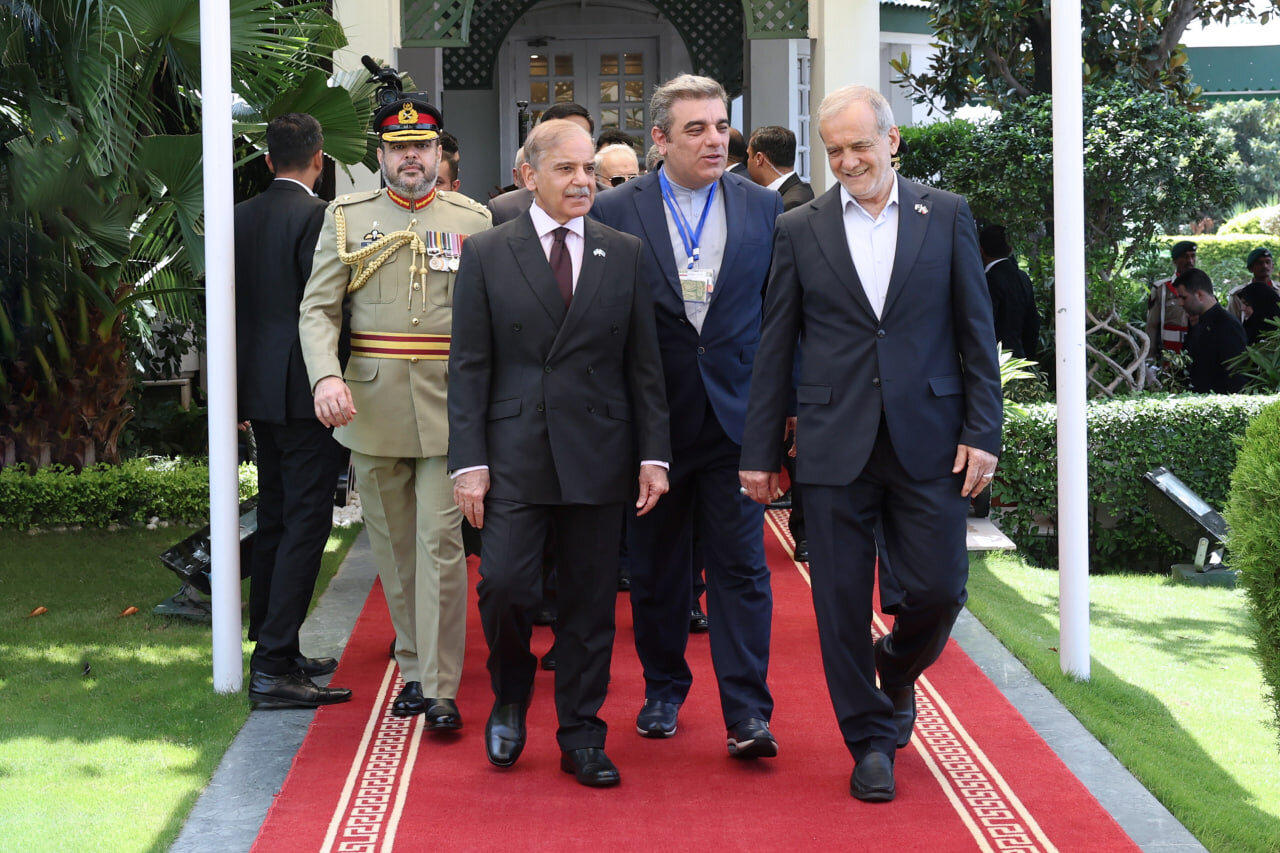Iran-Pakistan partnership: Turning borderlands into bridges

KARACHI, Pakistan — Iran and Pakistan’s renewed engagement, marked by President Masoud Pezeshkian’s recent visit to Islamabad, reflects a turning point in how both countries are reimagining their regional roles.
This is not merely an exchange of diplomatic pleasantries; it signals a broader recalibration rooted in economic pragmatism, evolving geopolitical calculations, and a recognition of shared challenges and opportunities, especially along their 900-kilometre-long border. Central to this evolving dynamic is Balochistan, a region often discussed in terms of its difficulties but now increasingly viewed through the lens of potential and connectivity.
Balochistan, both on the Pakistani and Iranian sides, occupies a pivotal geographic and strategic position. In Pakistan, the province is home to the deep-sea port of Gwadar, a key node of the China-Pakistan Economic Corridor (CPEC). On the Iranian side, Sistan-Baluchestan province hosts Chabahar port, developed with Indian assistance. Far from being mere rivals, the ports of Gwadar and Chabahar can serve as dual gateways to Central Asia, the Middle East, and South Asia, if bilateral cooperation is grounded in trust and strategic vision.
Both countries are increasingly aware of this opportunity. Rather than allowing external actors to frame Gwadar and Chabahar as opposing projects, Tehran and Islamabad have begun to hint at synergies—whether through cross-border infrastructure, transit trade facilitation, or complementary logistics chains. This shift in thinking is important. It acknowledges that regional economic integration cannot succeed unless border provinces like Balochistan are seen as bridges, not barriers.
The economic potential of Balochistan is considerable. The region is rich in natural resources, strategically located, and home to a young population. However, it remains underdeveloped in terms of infrastructure, education, and access to mainstream markets. Addressing this gap requires investment rather than charity. Both Iran and Pakistan are beginning to recognize that inclusive development in Balochistan is essential for long-term regional stability. Rather than viewing Balochistan solely through a security lens, there is a growing acknowledgment that empowering the region through legitimate trade, education, and connectivity will yield greater returns.
The broader context of Iran-Pakistan relations includes a shared understanding of global pressures. Iran remains under sanctions, while Pakistan continues to juggle its relationships with Persian Gulf states, China, the United States, and now India. In this context, strengthening ties with a neighboring Muslim-majority country provides both nations with strategic depth. Importantly, both nations reiterated strong positions on global issues—particularly their solidarity on Palestine and Kashmir, which gives their alignment a moral and political dimension beyond transactional cooperation.
During President Pezeshkian’s visit, both sides signed 12 agreements and memoranda covering sectors such as agriculture, technology, media, maritime cooperation, and border management. These agreements signal not only intent but also define the operational scope of the relationship moving forward. The goal of boosting trade from $3 billion to $10 billion may be ambitious, but it reflects the seriousness of purpose on both sides.
One key issue that continues to require thoughtful management is cross-border trade. Balochistan has traditionally been at the heart of formal and informal trade flows. Smuggling, particularly of fuel and goods, has often been the unintended consequence of poorly regulated borders and economic disparity. However, instead of treating this as a criminal problem alone, both countries are now exploring regularized and legal trade mechanisms to bring transparency and benefit local communities. In fact, recent steps by Pakistani authorities have led to a significant increase of over 300% in formal imports from Iran through legal channels. The challenge now is to sustain and expand this while ensuring that border communities are economically integrated into national frameworks.
What stands out most in this evolving relationship is the shift in tone. Iran and Pakistan no longer speak merely in terms of security cooperation or religious brotherhood. They are now framing their relationship as one rooted in shared economic interests, regional peace, and inclusive development. Balochistan is no longer treated only as a periphery—it is becoming central to this vision.
If both countries maintain this momentum and match words with policy, Balochistan could emerge as a corridor of opportunity. The ports of Gwadar and Chabahar, once emblematic of geopolitical rivalry, could become symbols of regional pragmatism and cooperation. And in doing so, Iran and Pakistan would not only enhance their bilateral relations but also help anchor a more stable, connected, and economically resilient region.
In a world increasingly polarized by great-power rivalry and economic fragmentation, regional cooperation between neighbors like Iran and Pakistan grounded in mutual respect and shared prosperity offers a realistic and much-needed alternative. The presence of Balochistan at the heart of this vision is not a liability; it is a test of leadership and foresight. And perhaps, it is also where the future of regional integration truly begins.
Haseeb ur Rehman is a journalist and regional affairs analyst based in Karachi, Pakistan. He writes on South Asian geopolitics, cross-border trade, and the socio-economic dynamics of Balochistan. He is currently associated with Daily Balochistan Express, Quetta, and Huashang News.
The views expressed in this article are those of the author and do not necessarily reflect the official position of the Tehran Times.
Leave a Comment